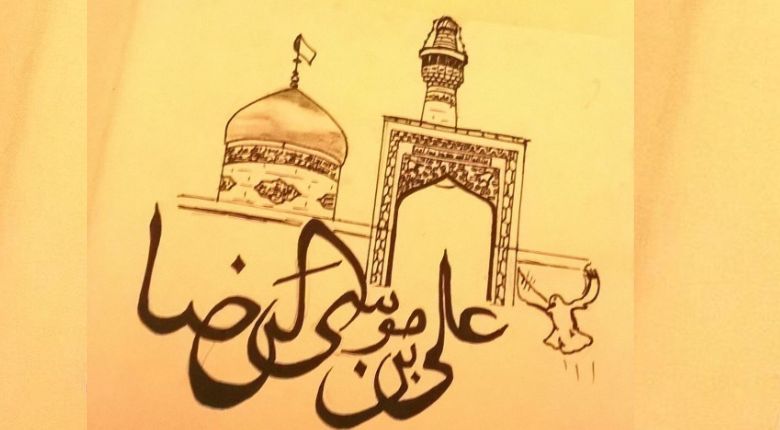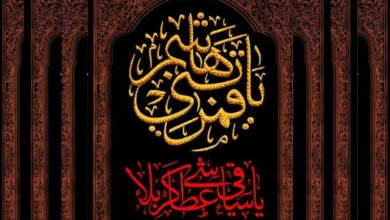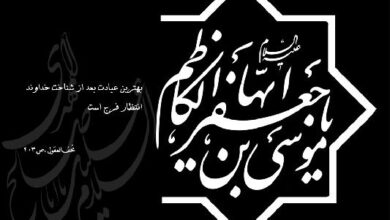The Imamate of Imam Musa Kazim (AS)

In this article you will learn true facts and historical elements about the imamat of Imam Musa Kazim As.Every Imam has talked about who would come after him. Just as Imam Ali Amirul Momeneen appointed Imam Hasan as his successor, Imam Hasan appointed Imam Husain, Imam Husain appointed Imam Zainul Abedin, Imam Zainul Abedin appointed Imam Muhammad Baqir, Imam Muhammad Baqir appointed Imam Ja’far Sadiq, Imam Ja’far Sadiq appointed Imam Musa Kazim , Imam Musa Kazim was appointed Imam during the lifetime of his father as subsequent proofs will testify.
- Difference between Ismaili’s and Asnaashri’s Shia
- Dispute of Imamat between Hazrat Ismail and Imam Musa Kazim (as)
Imam Musa Kazim’s imamat
Every Imam has talked about who would come after him. Just as Imam Ali Amirul Momeneen appointed Imam Hasan as his successor, Imam Hasan appointed Imam Husain, Imam Husain appointed Imam Zainul Abedin, Imam Zainul Abedin appointed Imam Muhammad Baqir, Imam Muhammad Baqir appointed Imam Ja’far Sadiq, Imam Ja’far Sadiq appointed Imam Musa Kazim , Imam Musa Kazim was appointed Imam during the lifetime of his father as subsequent proofs will testify.
In his book “Rijaal,” Kirshi says that Faiz ibne Mukhtar was the first person to hear that Imam Musa Kazim had been chosen.
Ibn Salit says that he and some other people went to see Imam Ja’far Sadiq. Ibn Salit greeted the Imam and said, “May my parents be sacrificed on you, O my dear Imam. You are our purified Imam, and no one who is born is immune to death. We have come to ask you about your replacement.”
The Imam pointed to his boys, and then he pointed to his son Musa and said, “He will be the leader of them all.” In him are grace, knowledge, kindness, and love for the Creator. No matter what problems people have with their religion, he knows how to solve them and will show them the right way. He treats people in the best way possible and talks to them in a great way. He is also one of the ways to get to God.
Dawood Ibne Kasir asked Imam Ja’far Sadiq who they would have to follow after he died. The Imam said that they would have to follow his son Musa.
At a public event, Imam Ja’far Sadiq once said that his son Musa would be the true heir and legal Imam. Ali and Ishaq, two of his kids, were also at this event. They were called witnesses and were thought to be wise prophets.
There were also present on the occasion, companions of Imam Ja’far Sadiq, and such other learned men whose knowledge of Islam was of a very high calibre and these were: Muffazzul bin Oomer, Maazbin Kaseer, Abdulrehman bin Hajjaj, Faiz bin Mukhtar, Yakoob bin Sarraj, Imran bin Aayoon, Abu Baseer, Dawood-e-Rikkee, Yunus bin Zibyaan, Yazid bin Salit, Suleman bin Khaled, Safwanay Jammal. All of them had to testify about what Imam Ja’far Sadiq said about the Imamt of Imam Musa Kazim.
Ebrahim-e-Karkhi said that he once went to see Imam Ja’far Sadiq. While he was talking to the Imam, Musa, the Imam’s son, came up to them. He kissed the baby, and the Imam said, “My son Musa will be your Imam after I die.”
“People will turn against him and cause him trouble. But his enemies will suffer. May Allah’s wrath be on these killers, and God will make their sentence worse.’ Then the Imam told me that after Imam Musa Kazim, his son Imam Ali Reza would be the Imam.
Walid bin Sabin says that Abdul Jaleel told him that Imam Ja’far Sadiq had chosen Hazrat Ismail to be his successor. “I asked the Imam to explain whether he had named Hazrat Ismail as his heir three years earlier.”Imam answered right away under oath that he had never said that, and he also said that Imam Musa Kazim would be his heir.
Obaid Ibne Zorara says that the Holy Imam Ja’far Sadiq said, “It is Satan who comes as Janab Ismail and tricks people. There is no way that Satan could ever take the form of a Prophet or Imam. Now, anyone who says that my son Ismail is alive and not dead can be assumed to be Satan in the form of Janab Ismail.”
Then the Imam told me that God is in charge of the Imamat and that God will choose whoever He wants.
So, God picked my son Musa to be Imam. Satan will never look like Imam Musa, and I thank the Lord for that. From this, it is clear that Satan took the form of Jaban Ismail to trick people and cause misunderstanding. It is also said that Satan took the form of Jaban Ismail while he was still living.
In Furoo-e-Kafi, Kulaini says the following: Janab Ismail had some Dirhams (the local currency), which he chose to give to an investor going to Yemen in exchange for a share in a business. Janab Ismail told his father about this, and the Imam told him that the man was a drunk and that it would be very wrong to give him money for business or have anything to do with him. Even though Ismail was told not to, he gave the money to this stranger. The stranger took advantage of him, and Ismail lost the money.
Imam Ja’far Sadiq and Janab Ismail went on the Haj Pilgrimage together. On the way, the Imam heard Janab Ismail begging God to give him back his money. The Imam told him that God would never hear his prayer because he had gone against the Imam’s wishes.
Hazrat Ismail’s Death
Hazrat Ismail was Imam Ja’far Sadiq’s oldest son, and Imam Musa Kazim was born when he was 28 years old. People started to think that Hazrat Ismail would be the next Imam because they knew how much the Imam loved him. This news spread far and wide, and now it was up to Imam Ja’far Sadiq to tell the world who would take over after him.
Authorities from both the Sunni and Shia groups agree that Hazrat Ismail died while his father, Imam Ja’far Sadiq, was still alive.
Saddrudin Hanafi-e-Kadri writes in his book “Kitab Rawa-e-Hool Mustafa” that Hazrat Ismail died in Urez while his father Imam Ja’far Sadiq was still alive, and that his body was brought to Medina to be buried.
As soon as Hazrat Ismail’s soul left his body, Imam Ja’far Sadiq closed his eyes and kissed his face. Then he told them to give the body a bath to clean it, and when the shroud was put on the body, Imam Ja’far Sadiq wrote this next to Hazrat Ismail’s name: “Ismailo Yash hado a lailaha illalla.” This means, “I bear witness that there is no God but Allah.”
After Hazrat Ismail died, Imam Ja’far Sadiq did everything he could to get the word out that he had died so that no one would think he was Imam and people wouldn’t be fooled.
The Imam asked Dawood bin Kaseeray Rikkee, Himran bin Aamoon, Abu Basheer, Muffazzal ibne Omer, and 30 of his close friends to find Hazrat Ismail’s face and find out if he was dead or not.
Hazrat Ismail’s death was confirmed by Dawood, and everyone else was told to be witnesses. Then Imam Ja’far Sadiq said, “O Allah, testify to this.”
After the cleansing bath, Imam Ja’far Sadiq asked Muffazzal to look at Hazrat Ismail’s face again to make sure. After seeing Hazrat Ismail’s face, Muffazzal was sure that he was dead. There was no question about it. Imam Ja’far Sadiq asked everyone there to testify because he knew this would cause a lot of trouble. Once more, he asked God to testify, and then the box was sealed and taken to Medina.
As a sign of his sadness, the Imam took off his robe (Aba). At different points along the way, Hazrat Ismail’s face was shown to the people as proof that he was dead. This was done to let everyone know that Hazrat Ismail was really dead and that he died while his father, the Imam, was still alive. Even with all of these measures, some people in faraway places just couldn’t accept that Hazrat Ismail had died.
When the funeral got to Medina, Hazrat Ismail was about to be put to rest in the grave that had been made for him. Again, Imam Ja’far Sadiq asked Muffazzal to look at Hazrat Ismail’s face and tell them if he was living or dead and who he was. All of them said, “O friend of Allah, there is no question at all that Hazrat Ismail is dead.” Once again, Imam Ja’far Sadiq said, “O Allah, you are a witness to this.” The Imam then said that people who like to cause trouble would try to stir up trouble.
‘Youreedoona lay-yootbay-o Noorallahay. People would try to put out Allah’s Light.’ Chp: 61:8.
Then Imam Ja’far Sadiq turned to his son Musa and said, “Wallaho Muttimmo Nooreyhee, Walau Karehal Kafeyroon.” God will make sure the Light doesn’t go out, and those who don’t believe will feel bad about their loss. 61: 8.
The body was then put in the hole, which was then filled with dirt. After that, the Imam asked the people at the funeral who had died, and they told him that it was his son Ismail. Once more, the Imam said, “O Allah, you testify.”
After the burial, Imam Ja’far Sadiq stood by the grave and prayed to God: “O Allah, if Ismail didn’t do anything for me, I forgive him, and if he did something wrong in Your eyes, please forgive him for me.
Then Imam Ja’far Sadiq took his son Musa’s hand and said, “Howa haqqoon wal haqqomah, wa min ila a yeareysallah al arzey wa man alaiha.” This means, “This is the truth, and the truth is with him, and through him, the truth will be known until the end.” He then went home and told his friends about the treachery in this world.
No one disagrees about where Hazrat Ismail’s grave is. He was laid to rest in Medina. In his book Taufatul Azhar, Syed Zaamin Sadkam says that Hazrat Ismail is buried in the house of Zaidus Saeed, the son of Imam Zainul Abedin, in Medina. This is what Kitab-e-Muntahal Aamaal says. In 546 A.H., Husain ibne Abil Hamza, a minister of Caliph Obaid Ali, built a small tomb on the grace.
Ja’far went to a lot of trouble to make sure that the death was really real. The body was on display for three days in the house so that people could see it. When people came to show their support, the Imam had them sign a statement he had written. “He did this until all the Hashimites, locals, and tourists in Medina had signed the list.” The Governor also signed the list at the grave in the Baqi’ graveyard.
Even stranger than Ismail’s life is how he died. Sunnis, Ithna Asharis, and Orientalists all agree that Ismail died before his father. But some Ismailis don’t agree, and they have some interesting ideas about how Ismail died. Even Ismaili expert Daftary says, “But most sources say that he (Ismail) died before his father” (A Brief History of Ismailism, 33). As we’ve already said, both the original Mubarikiyya group and the smaller sect that grew out of it after it split believed that Ismail died before his father and was Imam while his father was still alive.
Other Ismailis think that Ismail’s funeral was just a trick to make the Abbassids think he was dead and no longer a threat to their kingdom. Ismailis say that Imam Sadiq’s (AS) use of the taqiyya principle made it okay for him to hold a fake funeral. “Some of them (Ismail’s followers) say he didn’t die, but that his father said he did to save him from the Abbasid empire, and that he held a funeral meeting at which Mansur’s governor in Medina was a witness” (Sadiq Ali, 142).
Sadiq Ali has also suggested that the person who died wasn’t Ismail, but rather his twin brother Abdullah. People thought the dead man’s name was Ismail, but Imam Sadiq (AS) didn’t say anything. Also, Ismail was sent out of Medina that night without being seen.
Ismail later changed his name to Abdullah. Sadiq Ali comes to the following conclusions: The book Asraru’n-Nutaqa says that Abdullah and Ismail looked almost the same, and no one could see that Abdullah had died because he and Ismail looked so much alike. Because of this, Abdullah’s death was thought to be that of Ismail. At that time, Ja’far Sadiq had to keep quiet because the Abbasids had planned to kill Ismail. Because of this, Ismail was thought to be dead during his father’s time, but he was actually still alive (Sadiq Ali, 143).
The argument about who should take over for Imam Sadiq (AS) is mostly about whether or not Ismail died before or after his father. Another important question about the succession of Imam Sadiq (AS) is whether or not there was a change in nass. Ithna Asharis say that Allah made it so that the nass changed.
In the beginning, Imam Sadiq (AS) chose Ismail to be his heir. But it is said that Allah told Imam Sadiq (AS) that Imam Musa Kazim (AS) should replace Ismail as Imam Sadiq’s (AS) heir. The Ismailis say that the story about how nass changed is made up. Also, the Ismailis think that Allah would not change a law about who the Imam is.
They say this hadith: “In fact, God changes everything except the matter of the Imam” (Sadiq Ali, 148). Some Ismailis also say that the Imams can see the future and know things that can’t be seen. Since they can see what can’t be seen, announcing the change of nass would mean that the Imam is not as good as he could be. Sadiq Ali quotes Sachedina from Islamic Messianism: “It meant that God changed his thoughts (bada) because Ismail’s death made him think of something new.”
But these ideas in the theory of bada raised serious questions about how God knows things and, indirectly, about the Imams’ ability to predict what will happen in the future” (Sadiq Ali, 148). The Ithna Asharis say that the Imams know some things about the unknown, but that some commands can be broken, which is a sign of the Divine Will. Changes to the nass are an important part of the talk about who will take over for Imam Sadiq (AS).
To keep their credibility in the face of attack from the Ithna Asharis, the Ismailis have their own answers to the Ithna Asharis’ beliefs. The way the Ithna Asharis think about Imam Mahdi (AS) is laughed at by the Ismailis. The Ithna-Asharis think that their twelfth Imam, Imam Mahdi (AS), did not die. Instead, he went into hiding and is still there to this day. Before the Day of Judgement, he will return to the real world.
In Haft Bab, an early Ismaili book written more than 500 years ago, the author says that it is impossible for a person to live that long. “And every smart person knows that no one can live for five hundred years, so they can’t stay hidden in a cave for that long” (Haft Bab, 15).
The Ithna Asharis might say that Prophet Nuh (AS) also lived for a thousand years, that Prophet Khidr lived for a long time, and that the Sleepers of the Cave also lived longer than most people. The author of Haft Bab responds to this point by saying, “We would say that all of these stories need tawil (esoteric explanation), and they must only be used in their implied sense.”
(Haft Bab, 16). Also, the Ismailis say that the general people wouldn’t learn anything if they couldn’t talk to the Imam. The Ithna Asharis might respond to this argument by citing a hadith by Imam Sadiq (AS) that compares the expected Mahdi (AS) to the sun behind the clouds, which always gives people light. Since Ismailis don’t believe in the Mahdi, they think that the line of Ithna Ashari Imams stopped with Imam Hasan al-Askari, who was Imam Madhi’s father.
Ivanow is quoted by Sadiq Ali as saying, “If an Imam dies without leaving a son as his successor, it can only mean that not only he personally but also the whole line of his ancestors were not the true Imams. Thus, the break in the line of the Twelvers proved that at least the last few of them were not genuine.” (Sadiq Ali, 153). Some of the disagreements between Ithna Asharis and Ismailis are listed here. Early Ismailis believed in some of the same things. They thought that the Quran and law had both an exoteric (zahir) and a secret (batin) side.
The rules in the sharia are the exoteric part, and only ordinary people follow them. But the khawass, or the wealthy, follow the secret part of the sharia, which comes from the tawil, or hidden, parts of the Quran. The Nizaris are a group of Ismailis who do not follow the shariat to the letter. The author of Haft Bab says, “Those who are stuck in the world of shariat and haven’t reached haqiqat are called “dead, not living” in the Koran. People who only follow sharia are dead because they aren’t following the orders of the Bearer of the Truth of the time” (Haft Bab-I Bu Ishaq, 19).
The last thing Imam Ja’far Sadiq(as)told people
Because his son Musa Kazim’s life was in great danger, Imam Ja’far Sadiq came up with a plan. He told them the names of the Caliph Mansoor, the Governor of the Caliph at Medina, the Imam’s son Abdulla Aftab, the Imam’s wife Hamidah Khatoon (who was the mother of Imam Musa Kazim), and his son Musa kazim
First of all, the Caliph and the Governor, who killed Imam Ja’far Sadiq, could not be Imams. Then, Abdullah Aftah was born with a flaw that meant he couldn’t be an Imam, and finally, a woman couldn’t be an Imam. So Imam Musa Kazim was the only one left. When the people who followed Imam Ja’far Sadiq heard these names, they were happy. They knew what was going on and said that the Truth had come out.
The Writings of Sunni Scholars on Imam Musa Kazim’s Imamate
Sadruddin-e-Hanafi Kadri in ‘Kitab-e-Rawa-e-hool Mustafa,’ says what many a Sunni Aalim has said about Imam Musa Kazim.
In Kitabey Rauzatul Ahbab, Sawaahaydoon Nabooway, and Taarikay ibne Khallaykan, it says that Imam Musa Kazim was the seventh of the twelve Imams. His names are Kazim, Abdus Saleh, Saabir Saleh, and Zainul Mujtahaydeen, and he was Imam for 35 years. Shaikh Abdul Haq Dehalvi (Hanafi) says in Sher-e-Miskat that Imam Shafei said that Imam Musa Kazim’s tomb has become a holy place where people’s wishes come true.
His great knowledge and the way he treated people showed that he was religious, good, and had knowledge from the Holy Prophet. In his speech, he never hurt anyone, and no one could argue with anything he said.
Ibne Khallakan says that Khateb-e Bhagdadee said that Imam Musa was known as the Righteous because of his prayers and supplications. He was also known as Kazim, and he went about his life in such a humble way that he even forgave his enemies.
In ‘Sawaaykul Moreka’ Ibne Hazar-e-Hanafi mentions that Imam Musa Kazim was the natural successor of Imam Ja’far Sadiq in knowledge of religion, in his behaviour towards the people, and in his miracles; his knowledge was beyond the bounds of ordinary mortals and as he used to restrain his temper and forgive people he was called Kazim; the people of Iraq used to take his name as intercessor to God, and get their supplications granted. He was the most respected religious leader of his time and the most generous person.
In his book Miraatool Jinnan, Yaafeyee Yemani writes that Imam Musa Kazim was religious, kind, good, and a person who commanded a lot of respect. His name was Abdus Saleh. He was one of the Twelve Imams and prayed hard all the time.
Mamoon Rashid wrote in the book “Rauzatoos Safa” that his father, Haroon Rashid, told him that Imam Musa was the Imam, the Imam of his time, and the Caliph for everyone. “And I (Haroon Rashid) am the Imam for abuse and unfairness, and I am still the Imam of my time. I swear to God that Imam Musa is the Holy Prophet’s true heir. I am cold and cruel, and I don’t care about the good of my people. I swear to God that if my son stood up to me, I would rip out his eyes, because I won’t stand for any kind of resistance or involvement in the state.”
Haroon Rashid goes on to say, “This Imam Musa Kazim is the Successor of the Holy Prophet of Islam, and if anyone wants to learn about Islam, he should go to the Imam Musa Kazim.” When I heard these words from my father, Mamoon says, my love for the Ahl-ul-Bait became strong, and I felt that they should be respected and given the great importance that they deserve, and that they should never be bothered.
In his book Ittayhaf bay Hoobbil Asraaf (Egypt), Shaikh Abdulla bin Mohammad bin Aamir Sibraawee Shafei says that Imam Musa Kazim was the seventh Imam.
What Imam Musa Kazim knew about religion
Imam Musa Kazim’s knowledge is linked to that of the Holy Prophet, whose knowledge came directly from God. So, it is very clear that the Imam was very smart even when he was a child.
Yakoob Sarraj says that he once went to see Imam Ja’far Sadiq at his home and saw that the Imam was standing near the baby of his son Imam Musa Kazim and talking to him in private. I waited until the Imam was free and then sat down next to him as he had told me to. Imam Ja’far then asked me to say hello to Imam Musa Kazim, who would take over for him.
I did this, and to my surprise, the baby answered my welcome and told me that I should go home and change the name I had given my daughter, Humeara, because it was not a name that God liked. Imam Ja’far told me to do exactly what his son had said, so that the outcome would be good. I changed the child’s name when I got home.”
Abu Hanifa once went to Medina to see Imam Ja’far Sadiq. There was also a young child with the Imam who was about 5 years old. Abu Hanifa asked the Imam who the young child was. The Imam told him that he was Imam Musa kazim, his son. “Who sins?” Abu Hanifa asked the child.’
Abu Hanifa was asked to sit down by the child. He told Abu Hanifa that sin could be caused by God, by people, or by both. But God can never sin because he is just and can never do wrong. If a person is not guilty, God can’t punish them. Now, if both God and people sin, God is a part of this, which again is not possible. So, it’s clear that it’s the person who is to blame for his deeds.
So, the concepts of “reward and punishment” and “Heaven and Hell” came about. Abu Hanifa read the following verse from the Quran when he heard this: “Zoorreeyatan bazoha min baz. Wallaho samee-oon aleem.” This means, “Offspring, one from the other; and indeed, God is All-Hearing and All-Knowing.” 3:33. This verse tells us about the Holy Ahl-ul-Bait.
Abu Hanifa went to see Imam Ja’far Sadiq and told him that he had seen his son Imam Musa kazim praying and seen people walking in front of him. Abu Hanifa said something, so Imam Ja’far told his son Imam Musa kazim about it. Janab Musa said, “Yes, that’s right.” Then he said, “O dear father, the person I’m praying to is closer to me than my jugular vein.” He then read the Holy Quran verse “Wa Nahnoak akrabo eelaihay min hablil warid.” Imam Ja’far picked him up, kissed him, and told him, “My parents will die for you, and God knows everything.”
Ali ibne Rashid and other traditional writers say that the Shias of Naishapur got together and sent Mohammad Bin Ali as their representative to give Imam Musa Kazim 30,000 Dinars, 50,000 Dirhams, and 2,000 pieces of clothing. A woman named Shatita gave this constable a knitted piece worth 4 Dirhams and a 1 Dirham coin to give to the Imam on her behalf. She told Muhammad bin Ali,
“Innallah la yestahee minal haqqay,” which means that Allah is proud of the Truth (Haq), even if the amount is small. A bag was given with 70 letters asking for religious clarifications, and an empty bag was given for bringing back the answers. Each package was sealed and tied with a string.
He was told to give the packages to the Imam at night and get them back the next morning. He was asked to open five letters from the Imam to see if the questions had been answered. If he had answered these letters, he would have been the real Imam, and he should have been given the money and clothes or told to give back everything he had taken.
People told Muhammad Bin Ali to go to Abdulla Atfah when he got to Medina. He went to see Abdulla, and when he got back, he was very sad and asked, “Where to go? “Should I go to a Jew or a Christian?” I asked. “O Allah, show me the way to the right path. Guide me, O Allah.” I stood there confused until a slave came up to me and said he would take me to the person I wanted to see. So saying he took me to Imam Musa Kazim.
When the Imam saw me, he called me Abu Ja’far even though he had never seen me before. He asked me why I was so sad and down because I couldn’t find him and why I wanted to go to the homes of Jews and Christians. “Come, I’ll make you feel good and take away your problems. I am God’s friend and the person who speaks for God on earth. When you were waiting outside the mosque of our beloved Prophet, didn’t Abu Hamza lead you? All of your questions were answered yesterday.’
The Imam then asked for the bag where I kept the Dirham that belonged to Shatita and was the right weight. I had put it in the same bag as the other Dirhams. The Imam also asked for the knitted item that Shatita had given him. It was in the bag with the other clothes that were sent for him.
Muhammad Bin Ali said, “When I heard this, I was shocked and amazed. I gave him the piece of knitting and the Dirham that Shatita had given me.” I did everything the Imam told me to do. When he had the knitted piece and the Dirham in his hands, he turned to me and said the same verse as Shatita:
“Innallah, let there be peace in the land.” Then he said, “O Abu Ja’far, give my greetings to Shatita and give her this bag with 40 Dirhams in it. Then the Imam gave me a piece of coffin cloth and told me to tell Shatita that my sister Halima worked on it and that the thread used in it came from my grandma Fatima, who was the daughter of the Holy Prophet.”
The Imam said, “Tell Shatita that she will die 19 days after she gets the coffin cloth. Tell her to use 16 Dirhams out of the 40 sent to her for her own needs, but she must give the other 24 Dirhams as her own offering to the poor. I will be at her funeral to say the funeral prayers. Abu Ja’far, it is better for you to keep all this a secret.
When Muhammad bin Ali got home, he saw that the seals on the boxes were still in place. He broke open one seal to see if it was answered. He was shocked to find that the letter was answered even though the seal was still in place. Then he opened another seal, and to his surprise, the answer was also there. He looked at another cover and saw the same thing. He was no longer surprised, because he now trusted the Imam completely.
When Muhammad bin Ali got to Naishapur, he gave back everything he had brought back. He also saw that everyone who had given money or clothes to Imam Musa Kazim was now helping Abdulla Aftah. So it makes sense that Imam Musa Kazim sent back what these people sent him and kept what Shatita sent him. When he met Shatita, he saw that she was a strong believer, so he told her what the Imam had said.
Shatita died on the day that the prophet said she would, and the Imam was seen coming to her wake on a donkey. Before he left, the Imam said goodbye to his following and told them to be good and fear God. He also said that he would be there for their death prayers.
What Imam Musa Kazim (as)Did That Was Amazing
Many wise people in the Sunni Community have talked about the wonders of Imam Musa Kazim.
Shaikh Abdullah ibn Muhammad Aamayree Sibraawee Shafei in his book ‘Ittayhaf,’ mentions that when Imam Musa Kazim was in prison during the time of Caliph Haroon al Rashid, Kazi Abu Yusuf and Muhammad ibn Hasan Shaybani (Both learned divines of the Sunni community and followers of Abu Hanifa) visited the Imam at night to ask him about some urgent problems. The jail guard came up to the Imam and told him that his shift was over and that he would be going home and coming back the next day.
Then, just before he left, he asked the Imam Musa kazim if there was anything he needed help with. The Imam said “no,” and the guard left.
When the guard left, the Imam told his friends that the guard would die tonight. They were shocked to hear this, and in their hurry to get out of the jail, they forgot to explain their problems. On the way, they said that there was no question that the Imam knew the hidden secrets, but they sent someone to the guard’s house to wait outside and see if the Imam’s claim was true.
The person who was sent to watch heard crying in the middle of the night. When he asked what was going on, he found out that the jail guard had died. He went back to Kazi Abu Yusuf, who sent him, and told him what had happened. All of them were amazed and saw how powerful the Imam was.
Sadruddin Hanafi Kadri writes in his book “Rawaayhool Mustafa” that in “Rauzatool Ahbab,” a slave of Imam Ali Reza named Badrey tells the following story: “Once, Ishaq Ibne Amman was with Imam Musa Kazim when a person from Korashan came and sat down in the gathering. This guy talked to the Imam in a language that no one else could understand. The Holy Imam spoke the same language to the stranger. Ishaq didn’t know what language this might be, so he asked the Imam to explain.
He was told that people in Tibet and China spoke this way. Ishaq asked the Imam, “If you’ve always lived in this part of the world, how do you know the language of a place you’ve never been?” The Imam told him that there is no speech that an Imam who was chosen by God and the Holy Prophet doesn’t know. We can even understand what birds, animals, and fish are saying.
Sadruddin Hanafi writes in his book Rewa-e-Hool Mustafa that after Imam Ja’far Sadiq died, one of his sons, Abdulla Aftah, made himself Imam, even though he didn’t follow the directions he left behind.
Imam Musa Kazim was made Imam by his father, Imam Ja’far Sadiq. He sent his brother Abdulla Aftah, who pretended to be the Imam, to get a bag of firewood and bring it to his house. He set the wood on fire, and the fire began to burn. Imam Musa Kazim got up and walked his clothes into the fire, where he sat and talked to the people who had come to see him.
Then he got out of the fire, brushed the ash off his clothes, and turned to Abdulla. He told him that since he was claiming the Imamat, he shouldn’t be afraid to walk into the fire. Abdulla, the fake, was so scared that he ran out of the house of the Imam.
It’s important to know who the Imam is at the moment.
- The Imam is chosen based on a divine order.
- An Imam is born that way, but he doesn’t become the Imam until his master dies.
- Both Shia and Sunni books show that Nass is in favour of Imam Musa Kazim (AS).
- Imam Musa Kazim’s (AS) life and personality are the same as those of Imam Sadiq (AS) and the other Imams who came before him.




